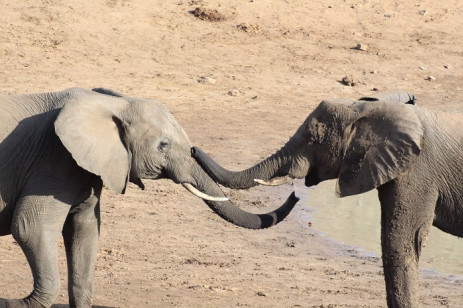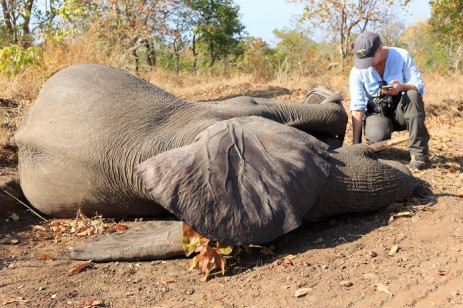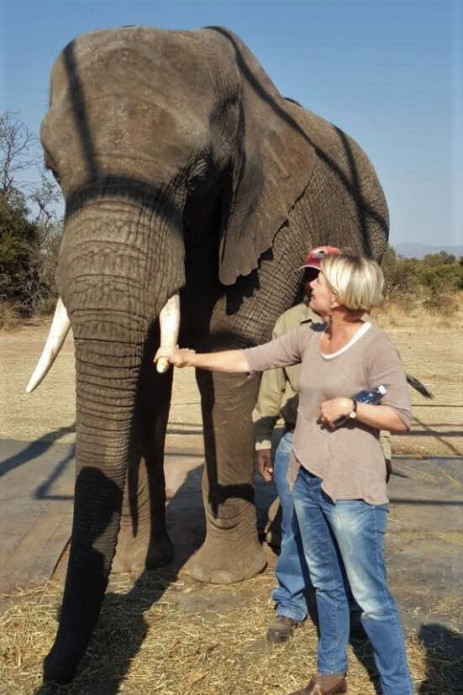Pachyderm perfume: African elephants share herd odour, local academics find
It helps them recognise members of their herd based on smell.
CAPE TOWN – Stellenbosch University academics have discovered African elephants share a “herd odour”.
It helps them recognise members of their herd based on smell.
The study, conducted by Dr Katharina von Dürckheim, found this has more to do with the bacteria they share when going about their ritualised greeting ceremonies than the fact that they might be related.
“Bacteria can be shared through the frequent physical and affiliative behaviour of elephants. Members of the same group often rub their bodies against each other and explore each other’s bodies with their trunks, for instance,” she explains.

“When there’s a spot of urine on the ground, an elephant first blows onto the sandy spot to create a sort of dust storm of particles. It will inhale deeply through the trunk, sometimes transferring particles to the Jacobsons’ organ through the roof of the mouth, in what we call a flehmen response.” – Von Dürckheim

“Elephants leave urine and dung behind on these pathways. These are like communication hubs. They contain olfactory messages that allow them to monitor which other elephants are around and are possibly ready to mate,” – Von Dürckheim
“This is possibly what actually creates a particular herd scent – not whether the animals are related or not. However, this does not mean that elephants cannot recognise relatives, or that a genetic signature for relatedness does not exist. Much research hints at urine containing a genetic marker. This is yet to be researched in elephants.”
According to Von Dürckheim’s so-called odour-gene covariance (OGC) genetics in animals do not not seem to play a role in knowing whether they are related or not.
“To study OGC, you examine blood and DNA, and you analyse the body chemistry of related and unrelated animals. You see whether because of genetic closeness, related animals have a more similar chemical profile to each other than to unrelated animals,” she said.

“The results were quite revealing. Based on scent discrimination elephants can differentiate between three generations of the same human family, and between at least nine different people. They learn superbly quickly.” – Von Dürckheim

“Elephants are highly adept at scent discriminating between humans, and scent tracking a target human across terrains.” – Von Dürckheim
While related elephants did share many chemical compounds, she found that these varied in intensity and identity.
Her research revealed the existence of individual identity odour profiles in African elephants, as well as a signature for age encoded in the temporal gland and buccal secretions. Olfactory signatures for genetic relatedness were found only in the labial secretions of adult sisters.
While related elephants do share chemical compounds, Von Dürckheim found these varied in intensity and identity.
“African elephants have this fascinating, ritualised greeting ceremony when they get together. No matter how often we’d work with the tame elephants, they’d still always do it too. They’d urinate, defecate, secrete from their temporal glands near their eyes, rumble, trumpet, spin their bodies around and fan their ears to waft something that I call ‘pachyderm perfume’ around.”
For all the latest lifestyle News Click Here

